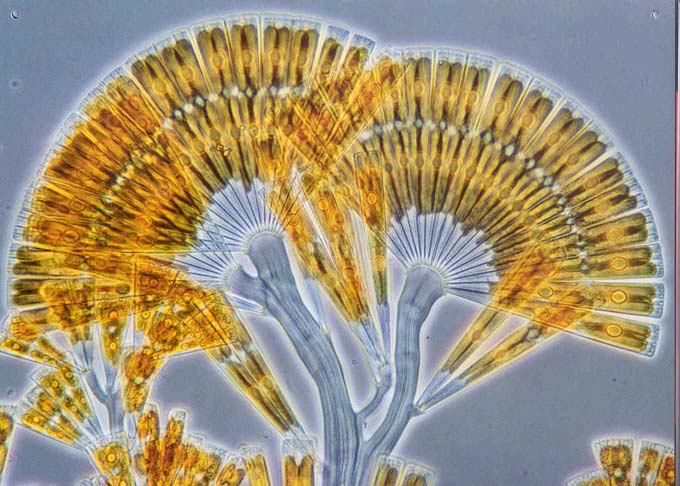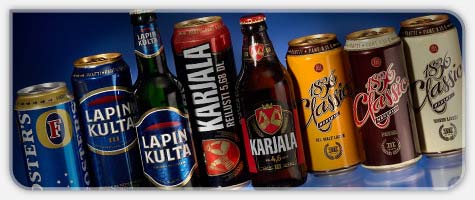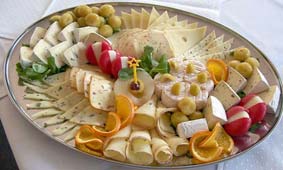No slide title

Carola Fortelius
ERASMUS intensive course
Tikkurila, 1st of June 2010
• Microbes – who are they?
• Microbes – how to work with them
• Cultivation of microbes
• Factors affecting microbial growth
• How to control microbial growth in
restoration work
Intoduction to Microbiology
What do you know about
nothing ? -------------------------------------------- a lot
Intoduction to Microbiology







Where do we meet them in our
Intoduction to Microbiology
Pictures of different kinds of micro-
Bacterial cells (E.coli) and colonies of Salmonella bacteria
Paramecium, eng.
Different algae types
Slipper Animalcule,
Intoduction to Microbiology
Intoduction to Microbiology
Classification of living organisms
Micro-organisms • protozoon
Common properties of micro-
• microbial cells are small, ca 0.01 - 10 μm
(human eye can distinguish >100 μm)
• undifferentiatied• mostly unicellular (mold and other fungi
• usually fast-growing • large surface area in realation to their weight
Intoduction to Microbiology
Common properties of micro-
• elastic, flexible, resilient (=> hard to break)
• often very modest with the nutritional
• often versatile metabolism
• genetical formability
• many micro-organisms can be exploited
Intoduction to Microbiology
Comparative sequence analysis of 16S RNA molecules has
elucidated that life on Earth is of 3 primary lineages,
referred to as domains: (i) Eukarya (ii) Bacteria (iii)Archaea
Intoduction to Microbiology
• Procaryotic organisms can be classified
according to many different properties:
– shape (rod, cocci, tetraed, chain, etc)
– composition of cell membrane (Gram + and Gram -)
– O metabolism
– other metabolic reactions
Intoduction to Microbiology
– energy source(s)
– formation/absence of pigments
– chemical composition of the lipids
– pathogen or not
– resistance to different antibiotics
– symbiotic relationships
– living environment
Intoduction to Microbiology
5007 species of bacteria, or in other words, around
1 % of all until now identified excisting species
Examples of bacterial classification Class, genus and species:
• Bacilli Bacillus (Bacillus subtilis), Listeria, Streptococcus (Streptococcus
aureus), Staphylococcus, Lactobacillus, Lactococcus, etc
• Gammaproteobacteria Escherichia (E.coli), Pseudomonas,
Salmonella, Yersina, ym.
• Actinobacteria ie. Mycobacterium, Streptomyces
Intoduction to Microbiology
Some common bacterial strains
Bacillus subtilis
Escherichia coli
Note that the magnification is different in different images!
Intoduction to Microbiology
• Archaea are simple cells that don't have
• They are phylogenetically differing from
• They are often found at extraordinary and
growth places; such as swamps, sediments at the bottom of the ocean, rumen (= 1st stomach of the cow) where the temperature, osmotic pressure, pH, oxygen free or H -
atmosphere is extrem
• 217 identified species
Intoduction to Microbiology
Archaea thrive in
Microbial sampling in acid mine drainage deep
underground in the Richmond Mine, Iron
Mountain, Calif. The water is almost as acidic as
battery acid, with a pH of about 1.
(Paul Wilmes photo)
Biogas: Methanogenic archaea
are responsible for all biological
sources of methane
Intoduction to Microbiology
• procaryotic and eucaryotic photosyntetic organisms
with chlorophyll and other photosyntetic pigments
• releasing O2
• Algae utilize photosynthesis (solar energy) to
convert simple inorganic nutrients into more complex organic molecules, or in other words, algae are primary producers of organic matter which animals depend on either directly or indirectly through the food chain
Intoduction to Microbiology
Algae, cont.
• occur in freshwater, marine water, and damp
• lifecycle of algae can be very simple, involving cell
division, or complex, involving alternation of generations.
• the plant body can be unicellular, colonial,
filamentous, siphoneus (?) , or parenchymatous*; but never with roots, stems or leaves
• not a natural group because of so many different
properties but the name is useful in many contexts
* primary tissue of higher plants, composed of thin-walled cells
Intoduction to Microbiology
Algae, cont.
Respiration is the reverse process of growth in which
protoplasm undergoes endogenous decay and/or cell lysis and oxidation.
Through respiration and decomposition, organic
matter is returned to the simpler inorganic state. During this breakdown oxygen is consumed and carbon dioxide is liberated.
Although algae respire oxygen in the presence of
sunlight, the amount produced via photosynthesis usually exceeds the amount used during daylight.
Intoduction to Microbiology
Different kinds of algae
(brown, green, red)
Ulva fasciata
Intoduction to Microbiology
Critical nutrients
to algal growth usually include phosphorus or nitrogen (though C, Si and light limitations may play a role)
cyanobateria produce toxical compounds
Cyanobateria ("blue algae", not a true algae)
Intoduction to Microbiology
Intoduction to Microbiology
Biofilms are formed
of microbes, growing
surface. The film is
often very thin an
Intoduction to Microbiology
Biofilms, cont.
The microbes existing in biofilms are less
sensitive to desinfectants and other chemicals
than free living cells. They can also stand heat, dryness and radiation better.
-> the biofilms are very (very) hard to destry!
In nature most microbes exist in biofilms.
Intoduction to Microbiology
Biofilms, cont.
Biofilm microbes, mainly bacteria, attach to
surfaces and produce free slime or slime capsules around theselves. the slime consists mainy of polysaccharides.
The slime protects the cells during unfavourable
environmental circumstances and biological and chemical attacks.
Intoduction to Microbiology
Biofilms, cont.
The formation of biofilms is a big problem in
drainpipes and many industrial processes, for example at the 'wet end' of paper machines and in food industry
If toxic compounds are not effective, one
solution to the biofilm problem can be the use of other, competing microbes, which do not produce slime.
This kind of solution is called competitive
Intoduction to Microbiology
Molds and mushrooms (Fungi)
Molds can be found almost everywhere because they
are very modest in their nutrial demands
Soil is the most common living environment
They are eukaryotic, and can have both sexual and
non-sexual reproduction; the non-sexual reproduction via spores
Vegetative growth takes part as mycelium
Mushrooms produce terrestial fruiting bodies (above
Intoduction to Microbiology
– Ascomycetes– Basidiomycetes– Phycomycetes– Fungi Imperfecti
Fungi with fruiting bodies large enough to be readily visible will
usually belong to one of two main groups. The Basidiomycetes
or the Ascomycetes. The main difference between these two
groups is in the way in which they produce their microscopic
spores.
Intoduction to Microbiology
Fungi with spores produced inside a sac called an ascus.
Each ascus usually contains 8 spores (sometimes four, -
depending on the species).
Intoduction to Microbiology
Fungi with spores produced externally, on
specialised cells called basidia.
Typically, there are 4 spores per basidium, although
this varies from 1 to many, depending on the species.
Intoduction to Microbiology
Fungi Imperfecti
Molds, that have never
been found to have a sexual form
but whereupon it is found,
the Fungi Imperfecti- strains are classified afresh, either as Ascomycetes or Basidiomycetes
Intoduction to Microbiology
Intoduction to Microbiology
Intoduction to Microbiology
Intoduction to Microbiology
Aseptical working methods
• By handling your microbial samples and
cultivations in the right way (=aseptically) you yourself will not be infected,
……….neither will
your samples be contaminated, but stay clean!
Intoduction to Microbiology
The aseptic technique is a method of preventing
contamination as well as a method of sterilization.
It means using common sense when handling your
cultures, such as not placing your hand over an open container, not touching a pipet to any surface where it could pick up a contaminant, and keeping all open cultures, media bottles, etc., inside the sterile air containment area.
Hospitals use the aseptic technique to prevent infection
during surgery. It can also be used in our homes by simply washing our hands before preparing food as well as washing dishes in the hot water of our dishwashers.
Intoduction to Microbiology
Joseph Lister, who introduced the use of
carbolic acid antiseptics in 1865
William Halstead, who advocated the use of
surgical gloves in 1898
Intoduction to Microbiology
Intoduction to Microbiology
Aseptic techniques
Aseptic techniques are ways of working that
seek to eliminate cross contamination of people and materials. The two main points of aseptic technique is (1) to protect the person doing the work and (2) to protect the work itself, to avoid contaminants.
To ensure that this happens, you should begin
and end the day with a clean work area and clean hands, and also clean during the day whenever you enter or leave the laboratory.
Intoduction to Microbiology
Bunsen flame to heat up the vessels, tubs,
inoculation loops, etc,
Chemicals to clean the surfaces (desinfectants),
Special rooms for handling the microbes,
samtimes even clean rooms
Laminar safety cabinet,
UV-lamps for illumination during night time,
sometimes addition of antibiotics to the growth
Intoduction to Microbiology
Intoduction to Microbiology
Some practical advice when working in
the microbiology lab
• At the beginning of work, you use cleaning solutions to disinfect
work benches and equipment surfaces that might be sources of contamination
• Make sure that you thoroughly clean your hands, wear clean
personal protective equipment and keep them clean throughout the day.
• Sterilise all media to be used for growing microorganisms in
• Make sure that you do not transfer microbes to or from other
areas of the workplace, including lunchrooms and toilets. No items from the laboratory should be taken into other areas such as lunchrooms, etc.
Intoduction to Microbiology
Some practical advice when working in
the microbiology lab
• Put all wastes and equipment used to make media into their proper
containers for sterilisation
• Make sure that Log Books, result sheets, manuals, pens and other
work items are not placed on preparation benches, where they can be contaminated and become a source of infection to you and others
• Attend to all spills, even small ones, straight away. It is not the size
of the spill or the amount of mess that it makes that is the important thing with microorganisms. All spills in a microbiological laboratory are potentially hazardous sources of infection
Intoduction to Microbiology
When you finish your work:
• disinfect all work surfaces
• discard protective clothing
• wash and/or disinfect your hands
Intoduction to Microbiology
Autoclave for sterilization
of microbial devices
Intoduction to Microbiology
Intoduction to Microbiology
• Microbes are tranfered from one cultivation
container/dish/etc with a sterile inoculation loop
or pipette or directly poured
• inoculation work is performed in a clean
laminar airflow safety cabinet
• the microbe to be cultivated is often in pure
form (not many species mixed together)
= a 'pure culture'
• growth conditions are regulated
Intoduction to Microbiology
sterile inoculation loops
Intoduction to Microbiology
Working in a laminar safety cabinet
Intoduction to Microbiology
Cultivation techniques
1. Cultivation on a solid surface
A mixture of suitable nutrients in water + powder of Agar-agar-algae is heated up to make a gelatinous solid medium. This algae is very resistant to biodegradation so the microbes cannot 'eat' it and it stays uneffected in the growth. When growing microbes on agar media one can regulate only the temperature and surrounding gas atmosphere
Intoduction to Microbiology
Intoduction to Microbiology
Intoduction to Microbiology
The origin of the microbe you want to cultivate can be,
1. A pure and identified cultivation bought from some
commercial collection
2. A single colony from a mixed own sample (then you
often have to do several dilutions and surface strikes bofore you ge a pure cultivation)
3. Any kind of a microbial mixture - not very often used
as such (you usually try to get them one by one)
Intoduction to Microbiology
Intoduction to Microbiology
2. Commercial 'Ready to use' agar plates
Intoduction to Microbiology
Intoduction to Microbiology
Things affecting microbial
Intoduction to Microbiology
Things affecting microbial growth:
4. Osmotic pressure (salt concentration)
Intoduction to Microbiology
The nutrients for cultivation of different microbes
For a solid medium you usually add 1,5% (15 g/l) agar to the nutrient broth
Examples of common media for cultivation of bacteria:
Plate count (TYG-) agar
meat extract 3 g/l
yeast extract 3 g/l
Nutrient broth + 15 g/l agar
Intoduction to Microbiology
Nutrients for cultivation
Examples of mold media:
Potato dexrose agar
sacharose 30 g/l
dried potato flour 200 g/l
KCl 0,5 g/l FeSO 0,01 g/l
Intoduction to Microbiology
Intoduction to Microbiology
Environmental factors affecting
microbial growth:
The microbes are divided into three main groups according to their optimal growth temperature:
- psychrophile -5 - 20 C
- mesophile 10 - 45 C
- termophile 40 C ->
Intoduction to Microbiology
Environmental factors affecting
microbial growth:
The microbes are divided into three main groups according to their optimal growth pH value:
- acidophile 0 - 7
-neutralophile 3 - 10
- alkalophile 7 - 14
Intoduction to Microbiology
Environmental factors affecting
microbial growth:
Salt concentration 2. The salt concentration in a
hypertonic solution is higher
than in the cell and the cell will
"bleed water" and dry
1. The salt concentration in
an isotonic solution is equal 3.The salt concentration in a
to the concentration a the
hypotonic solution is lower
than in the cell and the cell will "swell like a balloon"
Intoduction to Microbiology
Intoduction to Microbiology
Control of biological growth
as a restoration method
Control of biological growth as a
method for conservation
Before the treatment method is chosen you should ask the following questions:
- Is the treatment necessary?
- Will the artefact stand the treatment?
- What will be the result of the treatment?
- How and when will it be done?
- How often do you have to repeat the treatment?
- Is the treatment safe for the worker, is there
any better method?
Intoduction to Microbiology
Intoduction to Microbiology
Mechanical methods
• Remove the microbial growth mechanically either by hand
or with some tool (ie. with a scalpel, spatel, saw, hair dryer,
• The results are usually not stable
• Can cause damage to the object (ie. root removal, forceful
• To remove lichen from stone either strong soda or 5%
ammonia can be used as a pretreatment to make the lichen
Intoduction to Microbiology
Examples of methods in use:
high frequence electrical current
low frequence electrical current
low pressure (vacuum)
light traps (for insects)
Intoduction to Microbiology
• max effect 230 – 275 nm
• different action depending on the growth phase
• RH <60% (humidity low), otherwise no effect at all
• usually no very effective
• can destroy your artefact!
Intoduction to Microbiology
• ok for insects, molds can stand it
• can be used for paper and wood but paper
quality can be poorer if you repeat the
• 500 Gy is the minimum dose
• does not affect lead and tempera paints
• no secondary radiation or remains
Intoduction to Microbiology
High and low frequency currents:
• high frequencies kill wood insects (ie. Anobiidae), but
metals make the treatment ineffective
• high frequency sound drives away birds (2000-3500 V
and 0,5 mA); no harm to humans and animals
Intoduction to Microbiology
• By using hot air or steam
• books: 95 C, RH 40%, t= 4 hours
• Old textiles should not be treated with dry air!
Intoduction to Microbiology
Might be possible to use for
• some archeological artefacts and
• modern textiles, not old ones!
Intoduction to Microbiology
Biological methods
One can use natural phenomenons such as
parasitism or antagonism, i.e. viruses or insects
that cause some illness, to get rid of the primary
problem (plant growth, microbes, birds).
All possible consequences should be taken into
account before the treatment is started!
Intoduction to Microbiology
Remember always to check the properties of the
chemical you intend to use, how to protect yourself
and other safety regulations, what is the first aid if
something happens. This information is found on the
safety sheet that you can ask for when you buy the
Intoduction to Microbiology
Biochemical methods
This group consists of treatment with
ie. streptomysin ja penicillin have been used to treat stone and
wall paintings, different antibiotics ais effective on different
other antibiotics are pimafusin, kanamysin, econazole and
Intoduction to Microbiology
- enzymes can work as biocides (they catalyze the break down of
- trypsin is a protease-enzyme that catalyzes the break down of
- the enzymes can only function during optimal circumstances
(pH, temperature, substrate concentration etc) => the reaction
does not always take place, if the circumstances are not the right
Intoduction to Microbiology
initially a food preservation product
no long term effects
"attraction substance"
attract specific insects into traps, used in museums
Intoduction to Microbiology
Thank you for your attention!
nothing -----------------------? --------------------- a lot
Intoduction to Microbiology
Source: http://users.evtek.fi/~carolaf/Esitelmat/Erasmus%20Microbiology%201.6.2010-1.pdf
G ModelGAIPOS-2815; No of Pages 5 Gait & Posture xxx (2009) xxx–xxx Contents lists available at Whole-body vibration improves walking function in individualswith spinal cord injury: A pilot study Lanitia L. Ness ,Edelle C. Field-Fote a The Miami Project to Cure Paralysis, University of Miami Miller School of Medicine, Miami, FL, USAb The Department of Physical Therapy, University of Miami Miller School of Medicine, Miami, FL, USAc The Department of Biomedical Engineering, University of Miami, Coral Gables, FL, USA
Philips SMART Biphasic therapy Application note Philips SMART Biphasic therapy Since Philips introduced the first biphasic waveform for an external defibrillator in 1996, biphasic therapy has gained acceptance and is now recognized as the standard of care. However, the various defibrillator manufacturers recommend a wide range of energy (joules) dosages. This is because defibrillator manufacturers have created distinct biphasic waveform "formulations." So each manufacturer recommends energy doses appropriate for their shock formulation. While energy (joules) remains entrenched in defibrillator vocabulary as a descriptor of shock strength, current (amperes) has been shown to be a better predictor. For meaningful shock strength comparisons of biphasic waveforms, it's necessary to look beyond energy levels and compare the current delivered to the patient.







